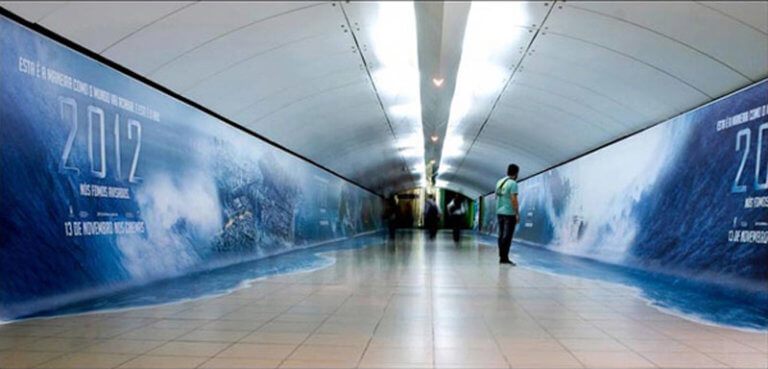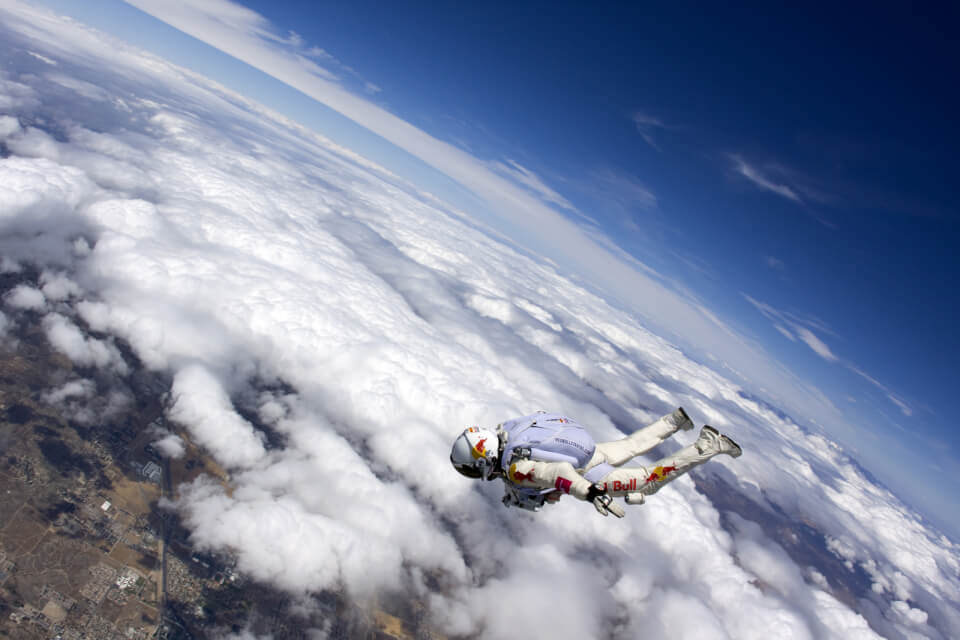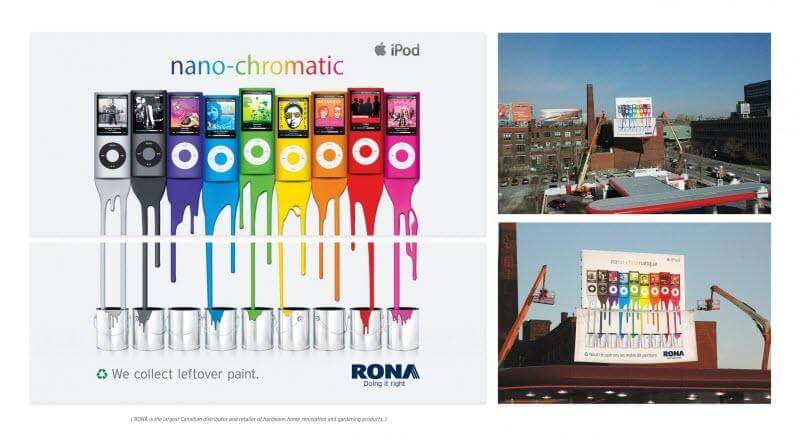
As the world begins to recover from the unprecedented pandemic that has silenced bustling cities, we can only imagine what the aftermath will look like. Consumers are fatigued from a year in quarantine where digital ads have been the dominating medium and people ready to experience the creativity that other mediums have to offer. While digital marketing does have its perks and benefits, nothing screams creativity like real-life experiential advertising found on the streets where Out-of-Home (OOH) ads live. People are waiting on the edge of their seats to start spending more time outdoors, which also means that advertisers have an opportunity to execute their creative vision in a way that will be appreciated like never before. Now is the time for OOH advertisers to give consumers what they have been waiting for – fresh new outdoor experiences. This is where Guerrilla marketing and OOH can come together to exceed consumer’s expectations and give them the memorable experience they’ve been craving.
What is Guerrilla Marketing?
Guerrilla Marketing is an advertising strategy that focuses on low-cost, unconventional marketing tactics that can deliver outstanding results. The original term was created by Jay Conrad Levinson in his 1984 book ‘Guerrilla Advertising’. The term Guerrilla Marketing was inspired by guerrilla warfare which is a form of irregular warfare and relates to the small-tactic strategies used by armed civilians. These tactics involved ambushes, sabotage, raids and elements of surprise. Stemming from the same concept as guerrilla warfare, Guerrilla Marketing uses unconventional ways to surprise consumers. Guerrilla Marketing is all about making an impression by shocking people with creative ideas to generate high amounts of social buzz. It also has the power to make a more valuable impression on consumers than traditional forms of advertising and marketing. Guerrilla Marketing can be considered a form of OOH, as it focuses on the same goal of creating positive engagement towards a brand. However, Guerrilla Marketing takes it one step further with its unpredictability that can evoke intense emotion, thanks to the shock factor that instantly demands attention.
Why and How Guerrilla Marketing is Being Used
Guerilla Marketing can be used by businesses of any size who wish to create a more memorable campaign. Originally, it was a concept for small businesses with a small budget to allow their voices to be heard. However, larger-scale businesses also saw the benefits and started adopting the same ideology, just with bigger budgets that allowed them to execute more elaborate campaigns. Although, some marketers argue that when big businesses apply guerrilla marketing tactics, it isn’t true guerrilla. This is because bigger companies have much larger budgets and their brands are usually already well established. While big businesses can use their brand name and budget to create something spectacular, they are also more at risk if engaged in a failed attempt at guerrilla marketing because of their well-known status. Since Guerrilla Marketing is all about unconventional stunts, any mistake can transform a marketing dream into a PR nightmare. For these reasons, companies must proceed with caution when partaking in Guerrilla Marketing as it is not always in the best interest of every company and not every idea will be well-received by the public. Smaller businesses don’t run as much of a risk since most people will just consider it a failed stunt with no real consequences. Advertisers must weigh out the pros and cons and anticipate the reactions of the public. For some major brands, it might be a good idea to stick to a traditional OOH campaign, especially if the brand image of the company does not resonate with the guerrilla stunt administered. However if it does, going big can be massively rewarding. For example, RedBull is a brand that identifies itself with energy, boldness, adrenaline, and movement. Action sports, competitions, and youthful vigor represent the brand’s core attributes. So when they implemented ‘The RedBull Stratos’ campaign, they were successful in pulling off a guerrilla stunt that resonated with the brand image and their motto, “Red Bull gives you wings”.

In 2012, Red Bull and Austrian extreme athlete Felix Baumgartner set a world record for the highest skydiving jump. The campaign involved sending Baumgartner on a death-defying jump at over 128,100 feet into the stratosphere. Baumgartner broke the speed of sound reaching an estimated speed of 833.9 mph (1,342.8 km/h) after jumping out of a helium-filled balloon. The entire trip back to earth lasted 9:09 minutes with 4:22 of that time in freefall. The Red Bull stunt attracted a multitude of viewers, so much so, that they broke social media records when they reached over 8 million views on YouTube. Users were also able to watch the jump live by visiting the Red Bull Stratos website, bringing well-deserved traffic to the website and social media platforms. This example showcases the power of Guerrilla Marketing stunts when done right and how it has the power to create a memorable experience that the world will never forget.
Ways to Implement OOH Guerrilla Marketing
1. Street Marketing
Street Marketing uses Guerrilla Marketing by including common features you would find outdoors and creating something attractive that interacts with everyday street signage or objects. It’s subtle in the way that it is a part of the natural environment, but bold and creative enough to allow passersby to re-imagine ordinary street elements in urban areas. Billboards are all around us especially in busy cities, so adding that extra feature to an existing billboard can transform an ordinary billboard to an OOH Guerrilla Marketing stunt. An example of this is Honda’s Fit Campaign.

In Toronto, Canada, the 2015 Honda Fit used OOH Guerrilla Marketing to launch their new automobile using 3D objects and color contrasting elements. The goal was to demonstrate the capacity of the car given its small frame, targeting those who travel by car and are in need of a small but spacious vehicle that can carry any kind of item. By re-imaging the pole that holds up the billboard as a funnel that represents the trunk of the car and that can carry the weight of bikes, clothing, suitcases, camping gear, etc., they were able to create an eye-catching billboard that sends the message loud and clear.
2. Ambient Marketing
While Street Marketing involves disrupting the norm in a noticeable way, Ambient Marketing takes a more subtle approach by using existing places and situations and adding an unconventional twist. Ambient Marketing places an ad campaign in its natural environment but adds a fresh new perspective or element to it. A perfect example is Mr.Clean’s city walkway campaign.

Procter & Gamble and Mr. Clean used the city crosswalk to promote the brand by painting one stripe bright white and adding Mr.Clean’s torso to it. By doing so, they were successful in sending a powerful but simple message: “Our product can make even the dirtiest surfaces clean.” The brand didn’t even add their logo to it, which goes to show how powerful their brand is! Incorporating street marketing into a guerrilla strategy must begin with the brand’s unique selling proposition (USP). What is the unique thing that draws customers to the product? By using visuals instead of words to successfully represent how the brand is special, people should be able to understand the meaning of the stunt without the need for explicit cues.
3. Ambush Guerrilla Marketing
As the name suggests, Ambush Guerrilla Marketing is all about the shock factor. It’s history involves catching people off guard by attaching itself to an important event and leveraging the audience to promote a product or service in a loud and noticeable way. This is usually executed without permission from the event sponsors and, as a result, can create a lot of chaos towards the event or brand. The objective is to turn heads whether it creates bad or good PR and the brand will most definitely generate a ton of buzz from it. Ambush Marketing campaigns can also be done through OOH ads where brands directly respond to each other or use the existing campaign of competitors to get their message across. This strategy is often used amongst brand rivalries or can create brand wars as a result. However, the extremely creative executions and rule-bending nature of this type of advertising is what makes them so intriguing to consumers. This includes everything from visual trickery to witty wordplay. As a result, Ambush Marketing campaigns are usually a lot more memorable than a typical ad because of their entertaining and clever qualities. An example of an OOH Ambush Guerrilla Marketing stunt is the one between Apple’s 2012 Nano campaign and Canadian paint and hardware firm, Rona.

Apple wanted to advertise its iPod Nano line by erecting a billboard ad next to the Jacques Cartier Bridge in Montreal displaying the colorful MP3 players in a rainbow arrangement. Rona took the opportunity to use the ad to its advantage by erecting its own billboard directly beneath Apple’s iPod ad to advertise their new paint recycling program. The ad’s slogan said, “Nous récupérons les restes de peinture,” which translates to, “We collect leftover paint,” as the image showcased paint from the colorful Ipod ad being dropped into Rona’s painting cans. It was simple, clever, entertaining, and most importantly, memorable.
4. Experiential Marketing
Experiential Guerrilla Marketing is all about engaging customers through a memorable experience. Using Experiential Marketing in OOH allows for the creation of pop-up experiences that use multi-sensory, immersive techniques to invite people to participate. This strategy is a great way to create an emotional bond between the participants and the brand.
An example of an Experiential Guerrilla Marketing ad is when Google and KitKat worked together to create a campaign to celebrate the launch of #AndroidKitKat, giving participants the chance to win a Nexus 7 Tablet by taking a break, ‘The Kitkat Way’. The OOH ad billboard had a seat protruding from the billboard asking passersby to literally, “Have A Seat”. The challenge was to be able to sit there for the set amount of time that was asked for in order to qualify to win the Nexus 7 tablet. This type of marketing creates the kind of word-of-mouth that spreads amongst those who walk by it, compelling them to stop, watch, and talk about what they saw and experienced. To successfully implement an Experiential Guerrilla Marketing stunt, all elements of the campaign must work simultaneously. More importantly, showcasing the events of the campaign in action by documenting it allows the campaign to be shared over and over again. This brings us to our next important point, the use of technology and user generated content in advertisements.
Social Media and OOH Guerrilla Marketing
Social media has made Guerrilla Marketing tactics all the more worthwhile. Social media platforms are experiential and guerrilla marketers’ best friend. Why? Social media is a vast and diverse place. From everyday conversations and photos, to hashtag trends and viral content, it offers plenty of Guerrilla Marketing opportunities for brands to let their imaginations run wild. Additionally, social media Guerrilla Marketing allows the brand’s to reveal their personality with consumers, giving them the chance to really get to know the brand and vice versa. An advertisement is the best source of communication towards consumers and social media makes sure that all the effort and creative thinking that goes into a guerrilla campaign can be shared with the world. Although people will likely spread the word locally about the event or campaign, only social media can achieve a global reach. So take a video and upload photos of the event on as many different platforms as possible to ensure that your campaign can reach its ultimate potential, allowing it to live forever on the internet.
The Bottom Line
If you’re looking to imprint your brand’s image into people’s minds with something they can take away and remember long after the event is over, Guerrilla Marketing is the way to go. Its unimaginable creativity and various ways to leverage makes it an ideal strategy. Not to mention, it’s amongst the most cost-efficient strategies in comparison to the value it provides. From small businesses with big ideas, to large companies with the capacity to create an out-of-this world campaign, the strengths of Guerrilla Marketing remain the same – word-of-mouth and the shock value. So if generating buzz around your brand and creating a personalized connection with your consumers is the goal, presenting an out-of-the-box campaign using any form of Guerrilla Marketing can speak louder than a thousand words.


